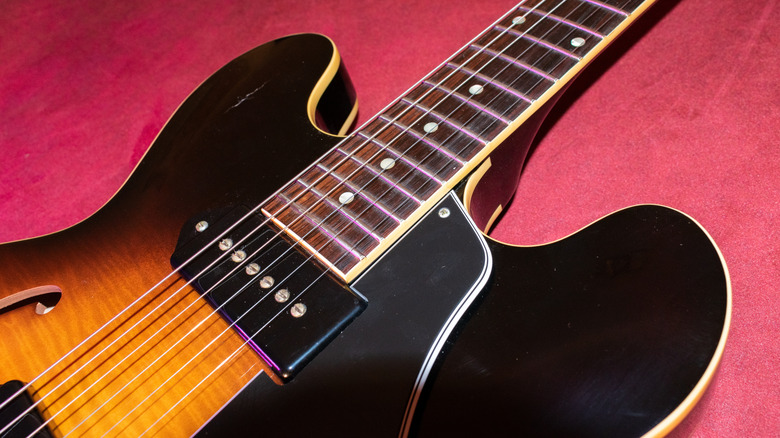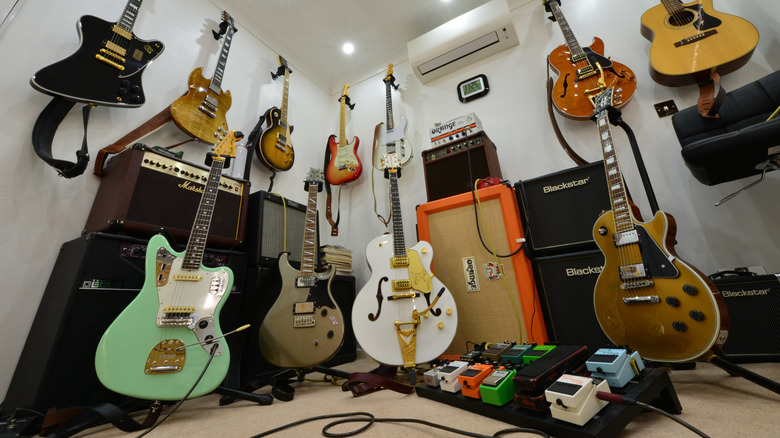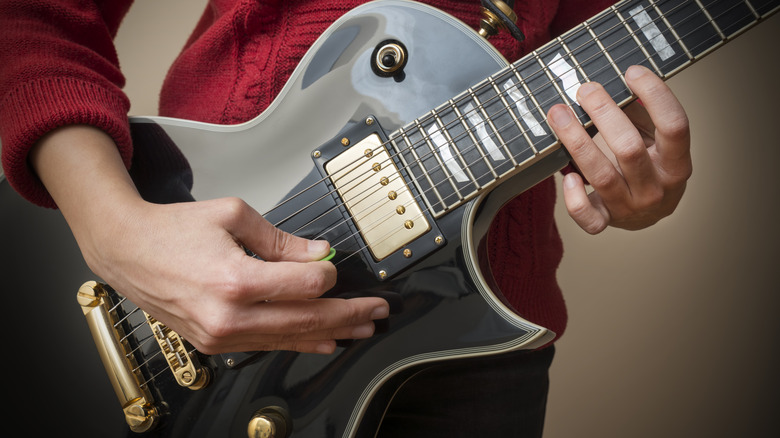Gibson Offers An App For Beginners Learning Guitar - Here's How It Works
It sounds cliché, but there's never really a bad time to start learning something new. Learning a musical instrument comes with a ton of benefits, including faster reaction times, improved motor control, and even changes to areas of the brain linked to memory and other cognitive processes. Besides the benefits, being able to make music – or play along to your favourite songs – is just plain good fun. Despite that, learning a new instrument can be intimidating, particularly when holding one of the best electric guitars for beginners.
There are many different ways you can begin learning guitar. You could start with group classes, private lessons, or just teach yourself. But Gibson, the guitar-maker behind the Les Paul, offers an app designed to help you get started on your journey to becoming a virtuoso. The app comes with support for beginners and more advanced guitarists alike, with over 10,000 lessons available, many of which are designed for those picking up the instrument for the first time. It teaches using real-time feedback provided with something called Audio Augmented Reality, interactive song exercises, and self-paced lessons with the Stop & Go feature.
The application teaches you how to play guitar using a couple of different methods. Learning materials are organized into courses that build on each other, much like some of the iPhone apps that can teach you an instrument. The lessons are broken up to teach different guitar playing styles alongside different lessons for playing rhythm or lead. You can also use the app to learn how to play specific songs, with a catalog ranging from Judas Priest to The XX and beyond.
What is Audio Augmented Reality?
One of the Gibson App's built-in features is called Audio Augmented Reality (AR), which gives you feedback on your playing by 'listening' to your guitar via your headphones and your phone's built-in microphone. If you slip up while practicing, which happens plenty when you're starting out, the app will notice and let you know with a notification sound. This is the app's way of giving your real-time feedback, in a similar way to how a tutor might.
Audio AR also enables you to put effects on your guitar, much like a pedal, plugin, or amplifier would, which you can hear back through your headphones. The app turns into a sort of digital amplifier, giving you the option of playing around with sound processing options like distortion, reverb, and chorus. You've probably heard these types of effects being used on professional recordings before.
To make the most of Audio AR, you're going to need to plug in some wired headphones or an interface that lets you line your guitar directly into your phone, like an iRig or Zound I/O. Line-in options help the app to pick up your signal as clearly as possible, which will make sure that any feedback you get is more accurate. It'll also help to make sure the playback through the digital amp is as clear and effective as it can be. But if you don't have either of those, you can still use your phone's mic. Similarly, you might have some success using Bluetooth headphones instead of their wired counterparts in a pinch, but latency problems can produce some pretty awkward results.
Break down your learning with Stop & Go
Another feature of the Gibson App is Stop & Go. It's a practice tool that slows down any tracks you're learning to play until you hit the right notes. This way, you can get real-time feedback while making sure you've perfected every part of a song before moving on to the next part. This will keep you from spending hours practicing the wrong notes without realizing it while learning to play a song.
When playing along to a song, you'll see guitar tablature on your screen. Tabs are kind of like sheet music, telling you where to fret to produce the right sounds for the piece you're playing. The app shows rolls through the tabs so you know exactly what to play and when. With Stop & Go enabled, the tabs will stop rolling each time you make a mistake while playing. It does this by picking up your playing through your microphone or line-in device.
Stop & Go is called a practice mode in the app, meaning it's specifically designed for learning the song. It's useful because it's common for beginners to get used to playing only certain sections of a song, such as a riff that repeats often or the first few opening bars, without quite being able to nail the rest of the track. You can turn off the mode at any time to play along as normal, or once you've finished perfecting the song. Alternatively, you can slow down or loop sections of the song without using Stop & Go if you'd prefer to keep going even if you make mistakes.


